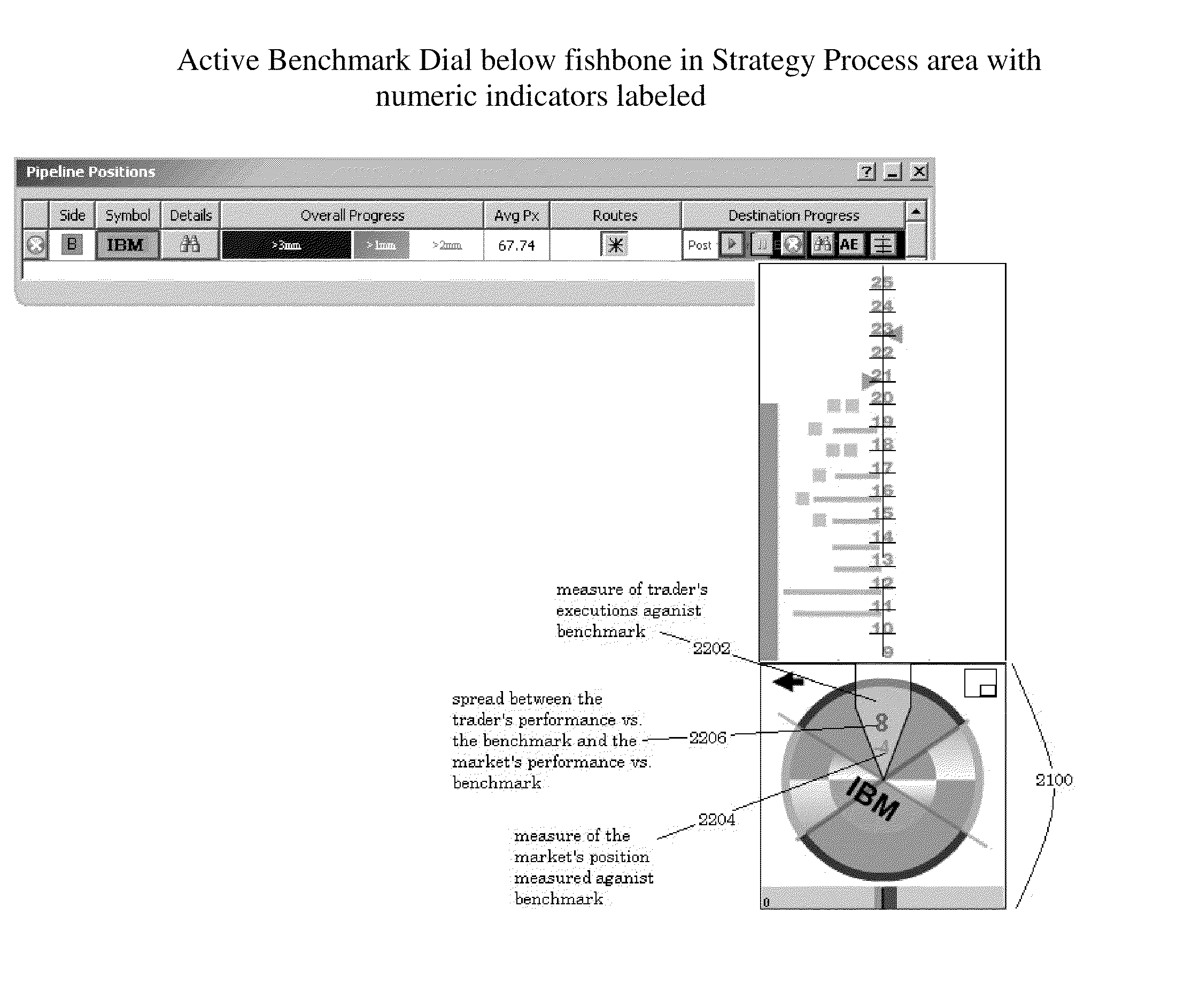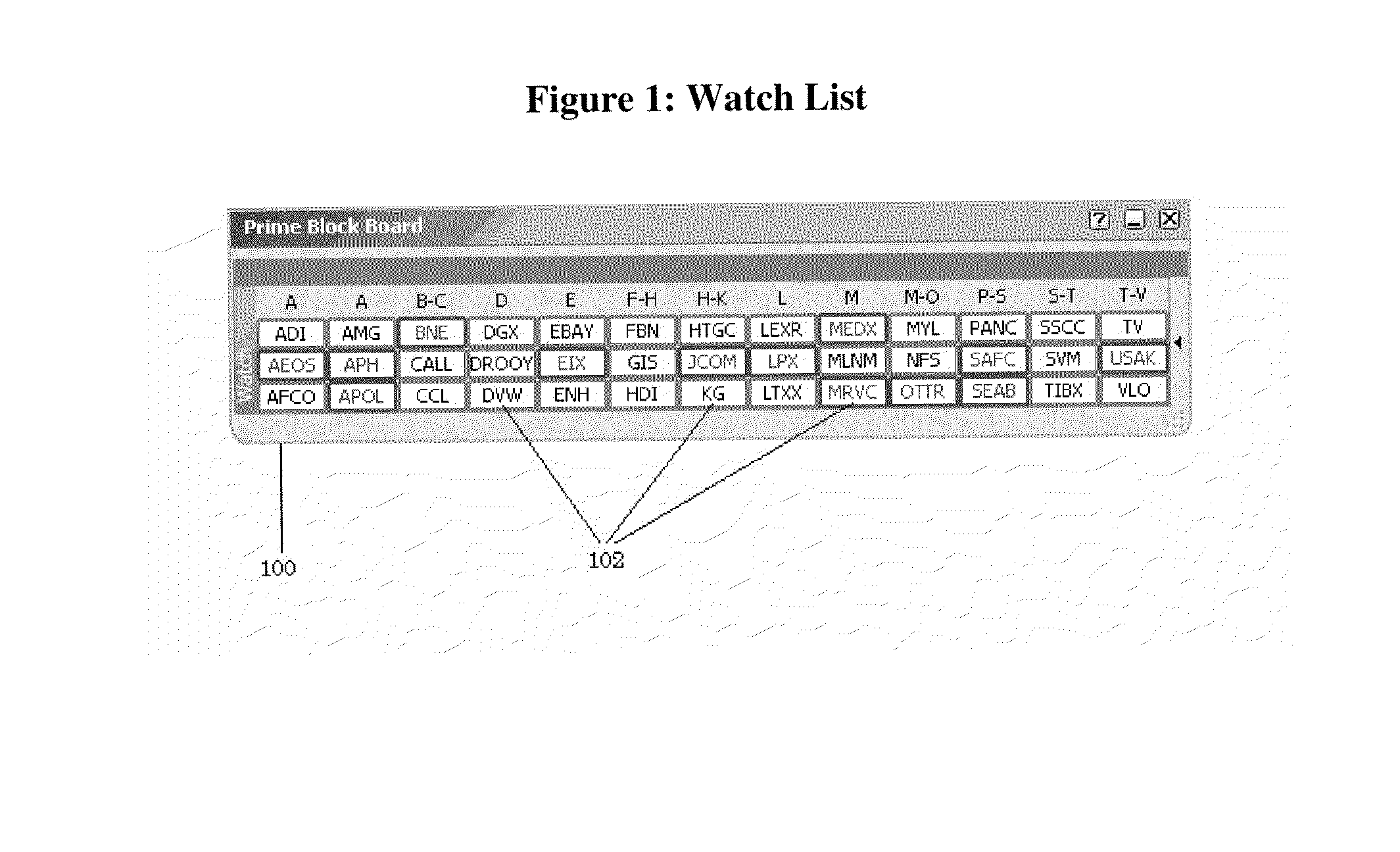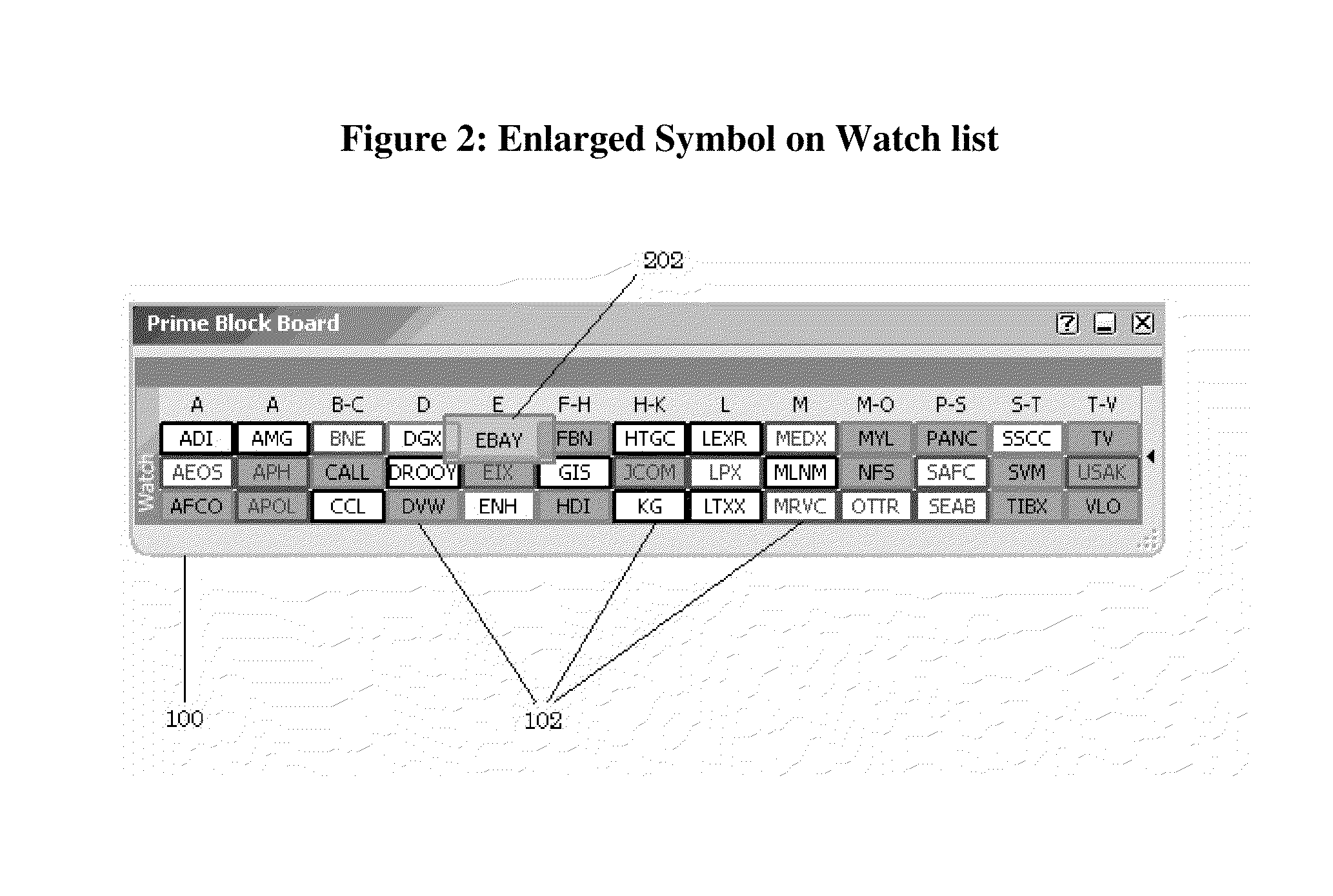Display of market impact in algorithmic trading engine
a technology of algorithmic trading and market impact, applied in the field of algorithmic trading, can solve the problems of traders who are not comfortable with the process of selecting, managing and evaluating algorithms, traders who have not been given the level of training or technological support required to maximize the benefits of algorithmic trading, and traders who are unable to manage algorithmic trading properly, so as to discourage potential trade counterparties and encourage potential competitors
- Summary
- Abstract
- Description
- Claims
- Application Information
AI Technical Summary
Benefits of technology
Problems solved by technology
Method used
Image
Examples
Embodiment Construction
[0052]Preferred embodiments of the present invention will be set forth in detail with reference to the drawings, in which like reference numerals refer to like elements or steps throughout.
[0053]Definitions of Strategic and Tactical Algorithms as used in the Subject System: A tactical algorithm is a computerized process to execute a large order by repeatedly placing smaller buy or sell orders until the total quantity is completed, wherein the algorithm is optimized to be most effective in specific market conditions, without regard to the possibility that it may not function properly in other market conditions. As such, a tactical algorithm is invoked to execute part but possibly not all of an order, with the limited tactical objective such as minimizing informational market impact in the current market environment. A strategic algorithm is a computerized process to execute a large order by invoking one or more tactical algorithms, depending on the market conditions, to ensure that t...
PUM
 Login to View More
Login to View More Abstract
Description
Claims
Application Information
 Login to View More
Login to View More - R&D
- Intellectual Property
- Life Sciences
- Materials
- Tech Scout
- Unparalleled Data Quality
- Higher Quality Content
- 60% Fewer Hallucinations
Browse by: Latest US Patents, China's latest patents, Technical Efficacy Thesaurus, Application Domain, Technology Topic, Popular Technical Reports.
© 2025 PatSnap. All rights reserved.Legal|Privacy policy|Modern Slavery Act Transparency Statement|Sitemap|About US| Contact US: help@patsnap.com



